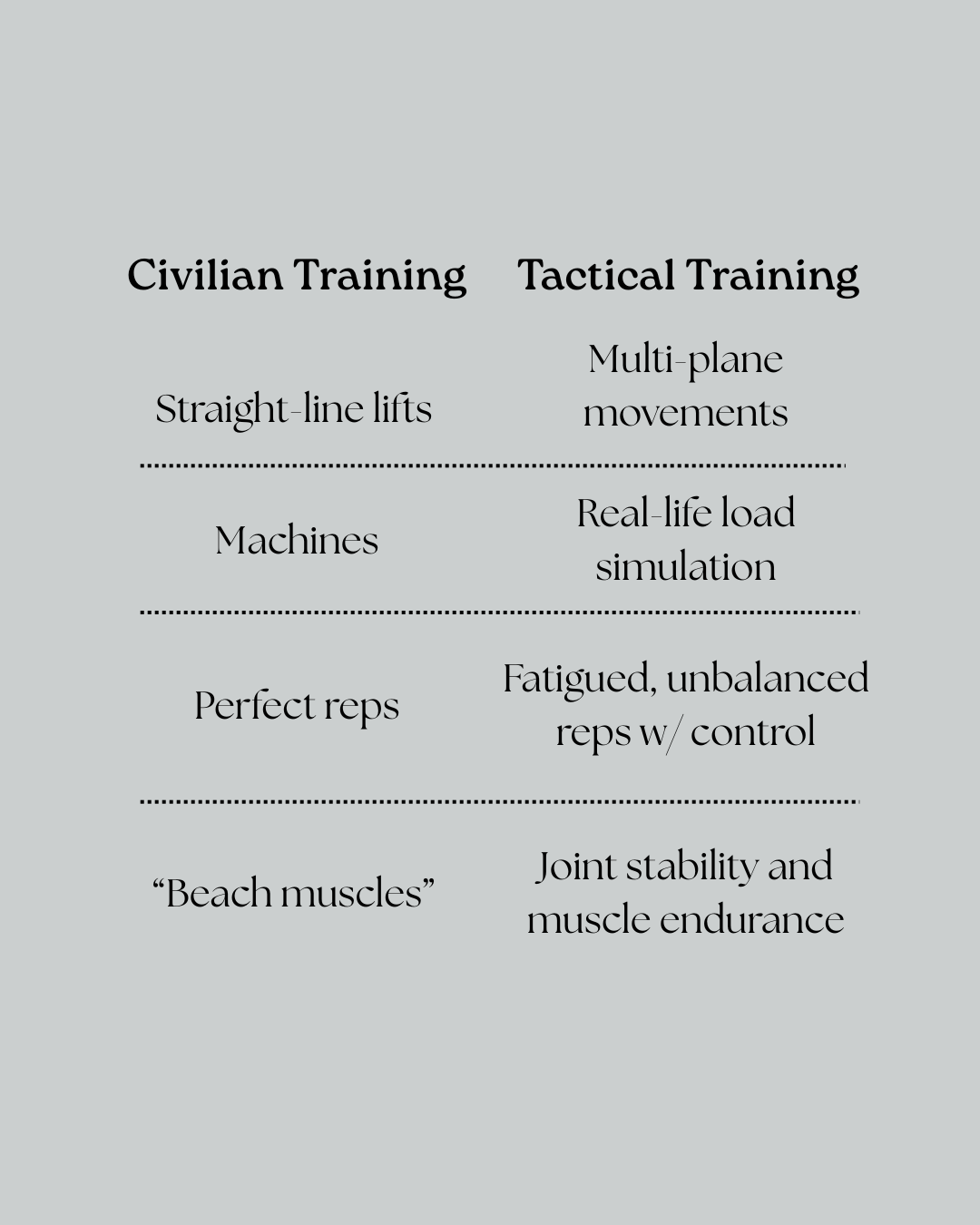🎒 You Job Wears 100 Pounds — So Why Are You Training Like a Civilian
Ever think about what you’re actually carrying on shift?
Between the gear, the boots, the belt, and the stress that creeps into your shoulders by hour 14, you’re walking around with 75 to 100 pounds of extra weight on your body. On top of that, you’re running, climbing, lifting people, and dodging furniture in a 2-bedroom apartment mid-call.
Now let me ask you this:
Why are you training like none of that exists?
🛠️ Gym Lifts ≠ Real Life Loads
Don’t get me wrong — lifting is awesome. I want you strong. I want you deadlifting, squatting, pushing, pulling.
But here’s the problem: Traditional gym training doesn’t prepare you for unpredictable, unstable, job-specific stress.
When was the last time you:
Lifted something heavy while twisting through a doorway
Carried a patient down three flights of stairs without a balanced barbell?
Dragged a body awkwardly with your core bracing like a maniac while your partner said, “One, two—wait, not yet!”
This is the stuff your back, knees, and shoulders are actually dealing with. This is the functional durability I want you to have.
🧱 Tactical Training Needs Tactical Movement
Here’s the difference between civilian training and tactical movement prep:
You’re not training for a bodybuilding show—you’re training for chaos. Controlled chaos, but chaos all the same.
And if your program doesn’t reflect that? You’re not training for your job. You’re training for someone else’s life.
🚑 Let’s Talk Injury Risk
When I meet first responders, the injury patterns are usually the same:
Lower back pain from bracing without proper core engagement
Knee pain from poor landing mechanics of tight hips
Shoulder pain from carrying gear overhead or awkward patient lifts
And I’ll ask them, “What’s your workout look like?”
They’ll say:
“I do legs Monday. Chest and arms Wednesday. Cardio when I can.”
That’s civilian training. It’s better than nothing—but it’s not protecting your body for this job.
🧠 Durable vs Strong: There’s a Difference
Anyone can look strong in a gym. That’s easy.
But what about when you’ve been up for 20 hours, your gear is soaked, and the call isn’t over yet?
That’s when durability kicks in. And durability is trained. On purpose. With a plan. Built around your gear, your movement patterns, and your recovery needs.
🚀 How to Start Training Like a Tactical Athlete
Want to level up your training? Start with these shifts:
Load Like Real Life
Carry uneven loads. Use sandbags. Train one side at a time. Mimic patient drags
Move in 3 Planes
Don’t just squat and hinge—lunge, twist, rotate, and stabilize while you do it.
Recover Intentionally
Training is only effective if you’re giving your body what it needs to bounce back. Sleep, mobility, hydration—it’s all part of the plan.
Train for Fatigue
Add circuits that spike your heart rate before you lift. Sound familiar? It should—it mimics being on scene.
👊 You Can Train Smart and Train Hard
I’m not saying give up lifting. I’m saying upgrade your training so it works with your job—not against it.
You’ve already got what it takes to serve your community. I want to make sure you’ve got what it takes to do it pain-free, long-term, and without sacrificing your off days to recover.
🧭 Need a Roadmap?
If you’re nodding along thinking, “Okay, but I don’t even know where to start,”—that’s exactly why I built my program.
It’s job-specific. It’s injury-preventive. It’s built around YOUR schedule and YOUR career.
My 6-month program launches May 28th, and I’m opening the door for early interest now. Drop your info here or shoot me a message.
Let’s get you training like your life—and someone else’s—depends on it.
Because it kinda does.

